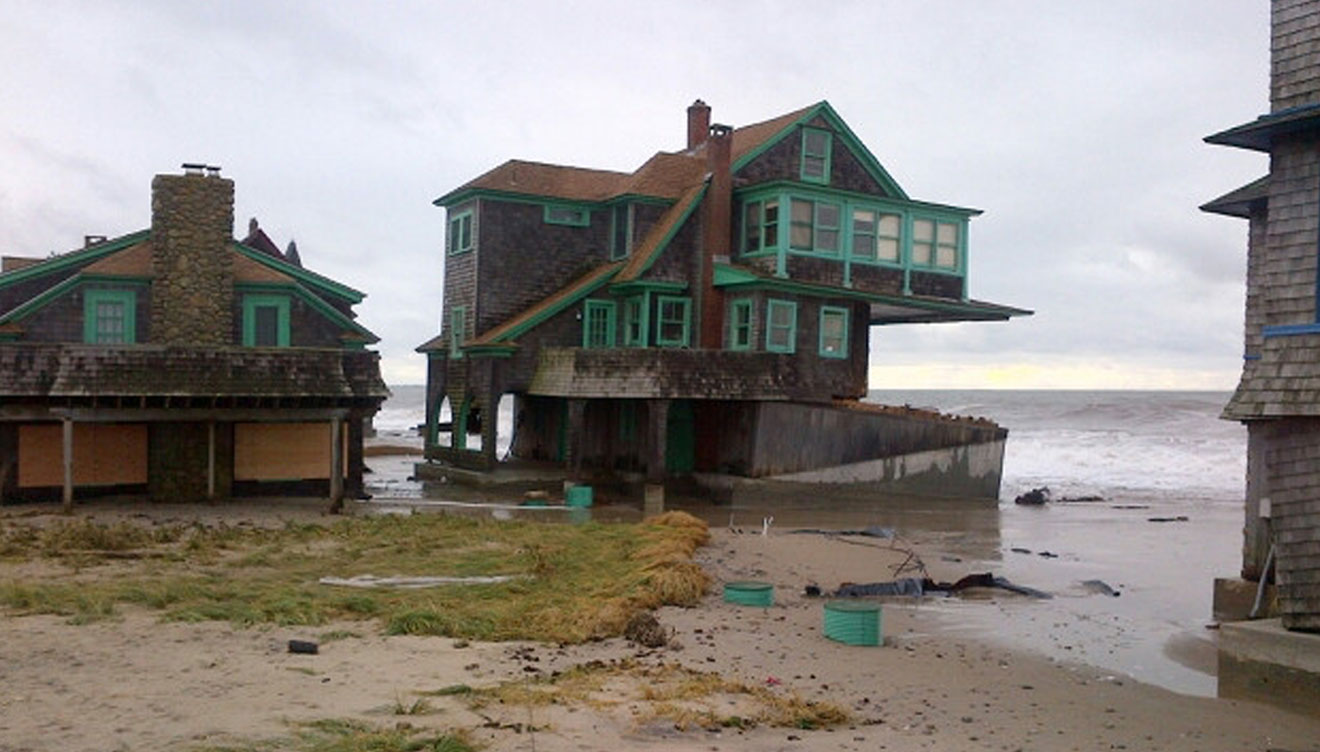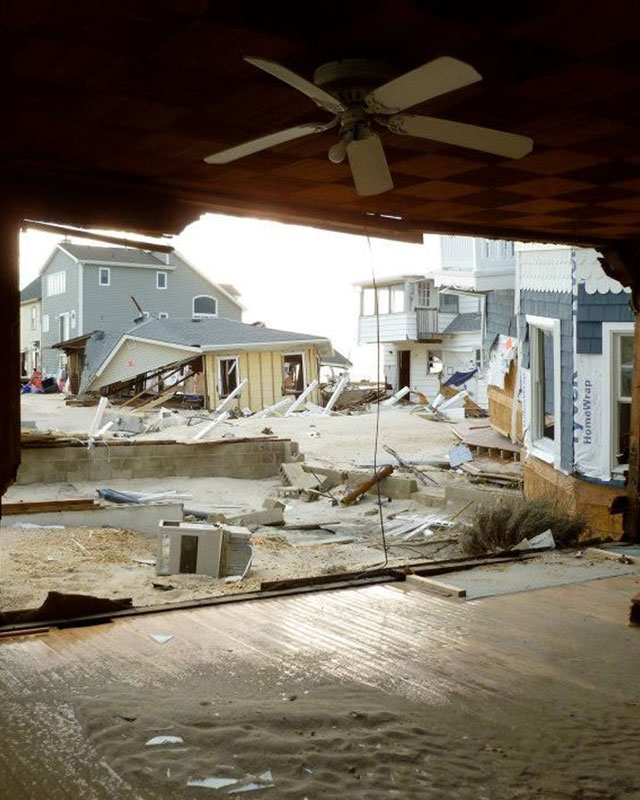A passion for maths and tropical cyclones
A passion for real-world maths has put Professor Jenni Evans inside the world’s most destructive cyclones – and at the top of her field.
Professor Jenni Evans hesitates to describe herself as a role model, but as a global leader in meteorology, she appreciates the importance of being visible to younger members of the profession.
And so, during her term as centennial president of the American Meteorological Society (AMS) in 2020, when she chaired the organisation’s 100th international conference, Evans wore what she describes as a “goofy fake-fur jacket” so she would be easier for students to spot in the crowded auditoriums. She also made a point of attending as many sessions as she could.

“I figured students should see I'm a faculty member and American Meteorological Society president, but I’m also involved in the science,” Evans says.
It captures what has made this meteorologist so successful both as a scientist and as a leader – she’s equally passionate about the science, and supporting the people involved.
Evans found her way into meteorology more by accident than design. She remembers worrying about Santa being blown off course by Tropical Cyclone Tracy, when it devastated Darwin in 1974. But it wasn’t until her second year of studying mathematics at Monash University, when an overnight field trip was used to teach the students about maths in meteorology, that her curiosity was piqued.
While she loved studying maths, Evans admits that she was looking for an exciting way to use it “in the real world”. Her advice for those interested in getting the most out of university, and even pursuing an advanced degree, is that you need passion and determination. “But if you have the fire in your belly, go and jump in and you’ll have tonnes of support, and you’ll have a fantastic time,” she says.
Cyclone path
After graduating, Evans thought about being a forecaster with the Bureau of Meteorology, but soon realised that wasn’t the path for her. She returned to Monash to work with Professor Bruce Morton in his fluid dynamics laboratory and, while there, took some courses that introduced her to tropical meteorology.
After earning her PhD from Monash – which was supervised by Professor Morton and the BOM’s Dr Greg Holland – she pursued her research into tropical cyclones at CSIRO, then moved to Pennsylvania State University, where she’s been ever since.
Her scientific quest is to understand the life cycle of tropical cyclones – in particular, those that move out of the tropics, surprising communities who expect to be safe. A recent example is Hurricane Sandy, which smashed into New York and the northeast US in 2012. Historical records point to these kinds of tropical cyclones making landfall as far north as the US state of Maine, and as far south as Perth, Western Australia.
One of Evans’ proudest achievements was working with a PhD student to create the three-dimensional cyclone phase space. This maps a cyclone’s structure at different heights all through its life cycle, which is vital for predicting how that cyclone might behave over time.
“That tells you whether it’s a weak tropical cyclone or a really intense, severe tropical cyclone – is it starting to change into a Hurricane Sandy, or is it even starting to become more like a polar cyclone?” she explains.


That work is now used by the US National Hurricane Center and the Canadian Hurricane Centre, and is even being examined by meteorologists in Perth. “This is stuff we did in theory, exploring how to use computer models for more than track and intensity, but it has a practical, real-world application.”
Wide impact
As one of only five women to have held the position of president of the American Meteorological Society in its century of existence, Evans is occasionally asked about being a woman in a profession that, like so many other sciences, is still male-dominated. While she observes that some areas of meteorology are yet to achieve gender parity, she says tropical meteorologists seem to be more egalitarian and laid-back than some of their colleagues.
When she’s not managing her own and her PhD students’ research, Evans leads the Institute for Computational and Data Sciences, which is one of five research institutes at Penn State. The institute spans 10 faculties, employing academic staff across the university, and developing and operating its high-performance computing facility.
Evans delights in the interdisciplinary nature of her role at the institute. Whether it’s political scientists examining email traffic to understand power structures in government, or epidemiologists looking at GPS data to map the spread of disease – something particularly relevant during the COVID-19 pandemic – or researchers modelling the impact of climate change on societal resilience, she gets to “help other people do really cool research”.
"You have to want to help other people to really excel, and that means you’re not sitting there thinking all about yourself.”
Perhaps the most important part of her role as institute director is to encourage and help others, and Evans is generous in her praise of the other four directors, describing them as generous, nurturing and sensitive.
“Those characteristics are important for being an institute director, because you have to want to help other people to really excel, and that means you’re not sitting there thinking all about yourself.”
So, what’s next for a scientist who has already achieved what some consider to be the Mount Everest of career highs – president of a science’s peak body? There’s no shortage of requests for Evans’ presence on committees and, with the increase of climate change-associated extreme weather events, there’s a desperate need for her expertise on tropical cyclone behaviour.
But for the moment, Evans is extremely happy with where her career has taken her, and still delights in working with her graduate students. “I really love what I’m doing,” she says. “I’m not sure that I want to change anything right now – it’s a wonderful place to be.”



